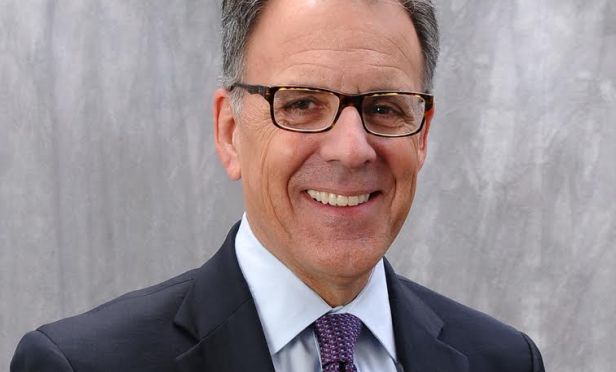
MIAMI—Prime class A multifamily investments are harder to find at this stage in the cycle. At the same time, secondary and tertiary markets are seeing an uptick in investment. That has trickled down to class C multifamily assets in some cities.
GlobeSt.com caught up with Jim Reed, director of Franklin Street in Jacksonville, to get his thoughts on this trend in part three of this exclusive interview. You can still read parts one and two: Why You May Want to Invest a Little Further North and What CRE Investors Are Concerned About Most Right Now.
GlobeSt.com: How do older properties and Class B and C assets fit in the current market?
Reed: A strong recent trend has been seen in sales of class B properties, built between the 80s and as recently as the early 2000s. Investors intend to significantly upgrade these properties by remodeling the amenities, upgrading the units with high-end finishes, appliance packages, washers and dryers and more, to attract tenants who, fall just below the affordability range of the new class A product.
Similarly, class C properties offer great value and opportunity for the investor in today's market. Many have below market rents that can be significantly increased after the property has been upgraded.
GlobeSt.com: What kind of deals are you seeing in North Florida?
Reed: When we list a property, we are seeing multiple offers from qualified buyers. Once under contract, we are usually able to keep one or two backup offers in play, allowing the seller to close at or near the contract price.
GlobeSt.com: What advice can you give current multifamily owners if they are considering selling their investments in the next 12 to 18 months?
Reed: This is becoming a seller's market, if it is not one already. Thus, when the time comes to sell, my strongest recommendation would be to expose the opportunity to the broadest range of potential investors and allow the process of competition to bring out the highest prices from the strongest buyers. A quiet off-market deal will not always accomplish this.
GlobeSt.com: What is the outlook for the North Florida multifamily market?
Reed: In North Florida, there are over 2,100 new units in various stages of construction with another 2,300 or so planned units. Investors continue to look for value-add opportunities in class B and C properties.
In terms of job and wage growth, demographics, vacancy and rent growth, market fundamentals remain strong, which will continue over the next few years. These solid growth fundamentals are influencing the demand as investors seek higher yields that this market can provide.

MIAMI—Prime class A multifamily investments are harder to find at this stage in the cycle. At the same time, secondary and tertiary markets are seeing an uptick in investment. That has trickled down to class C multifamily assets in some cities.
GlobeSt.com caught up with Jim Reed, director of Franklin Street in Jacksonville, to get his thoughts on this trend in part three of this exclusive interview. You can still read parts one and two: Why You May Want to Invest a Little Further North and What CRE Investors Are Concerned About Most Right Now.
GlobeSt.com: How do older properties and Class B and C assets fit in the current market?
Reed: A strong recent trend has been seen in sales of class B properties, built between the 80s and as recently as the early 2000s. Investors intend to significantly upgrade these properties by remodeling the amenities, upgrading the units with high-end finishes, appliance packages, washers and dryers and more, to attract tenants who, fall just below the affordability range of the new class A product.
Similarly, class C properties offer great value and opportunity for the investor in today's market. Many have below market rents that can be significantly increased after the property has been upgraded.
GlobeSt.com: What kind of deals are you seeing in North Florida?
Reed: When we list a property, we are seeing multiple offers from qualified buyers. Once under contract, we are usually able to keep one or two backup offers in play, allowing the seller to close at or near the contract price.
GlobeSt.com: What advice can you give current multifamily owners if they are considering selling their investments in the next 12 to 18 months?
Reed: This is becoming a seller's market, if it is not one already. Thus, when the time comes to sell, my strongest recommendation would be to expose the opportunity to the broadest range of potential investors and allow the process of competition to bring out the highest prices from the strongest buyers. A quiet off-market deal will not always accomplish this.
GlobeSt.com: What is the outlook for the North Florida multifamily market?
Reed: In North Florida, there are over 2,100 new units in various stages of construction with another 2,300 or so planned units. Investors continue to look for value-add opportunities in class B and C properties.
In terms of job and wage growth, demographics, vacancy and rent growth, market fundamentals remain strong, which will continue over the next few years. These solid growth fundamentals are influencing the demand as investors seek higher yields that this market can provide.
Want to continue reading?
Become a Free ALM Digital Reader.
Once you are an ALM Digital Member, you’ll receive:
- Breaking commercial real estate news and analysis, on-site and via our newsletters and custom alerts
- Educational webcasts, white papers, and ebooks from industry thought leaders
- Critical coverage of the property casualty insurance and financial advisory markets on our other ALM sites, PropertyCasualty360 and ThinkAdvisor
Already have an account? Sign In Now
*May exclude premium content© 2025 ALM Global, LLC, All Rights Reserved. Request academic re-use from www.copyright.com. All other uses, submit a request to [email protected]. For more information visit Asset & Logo Licensing.








